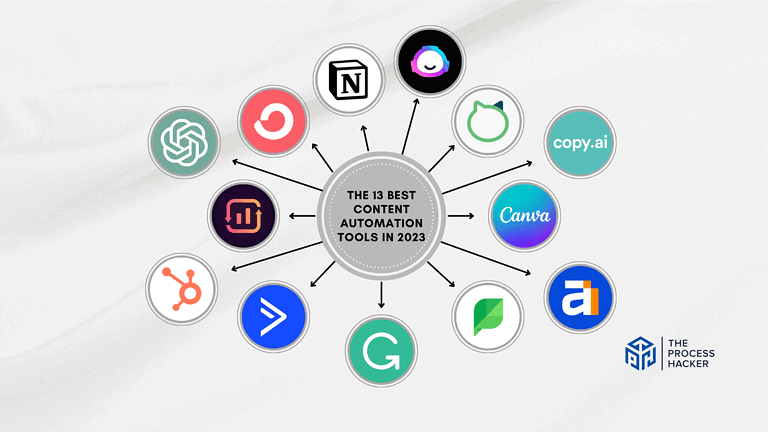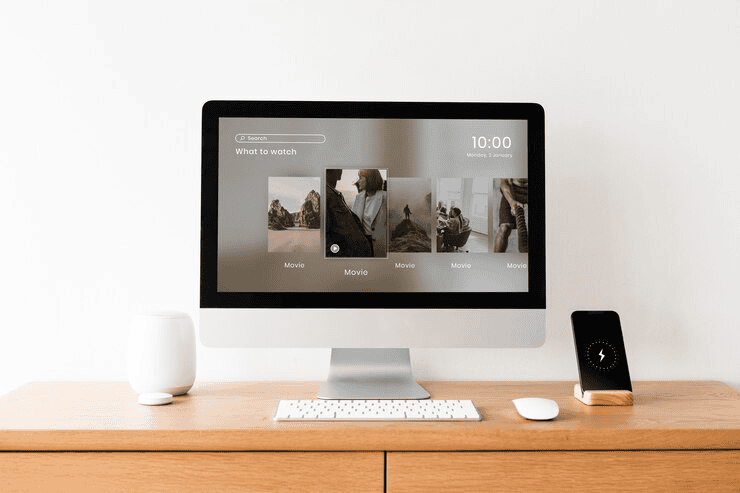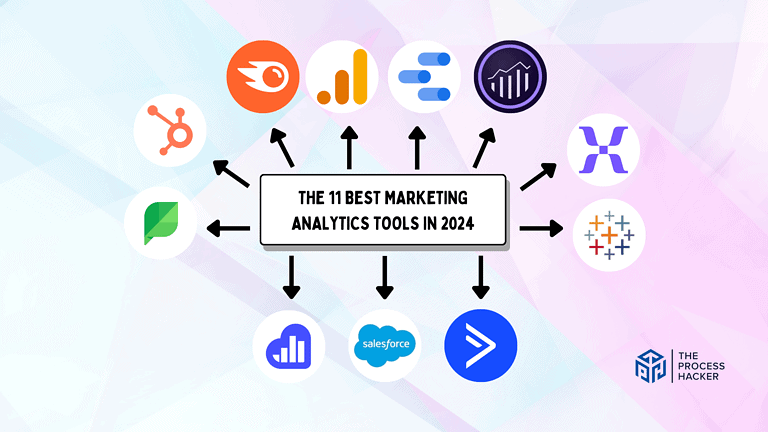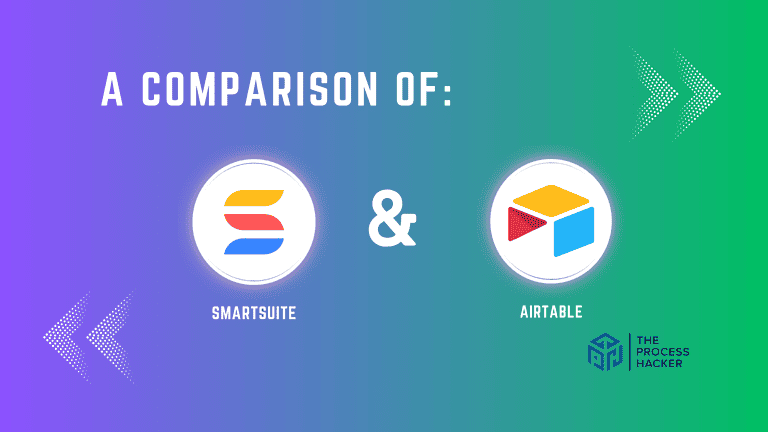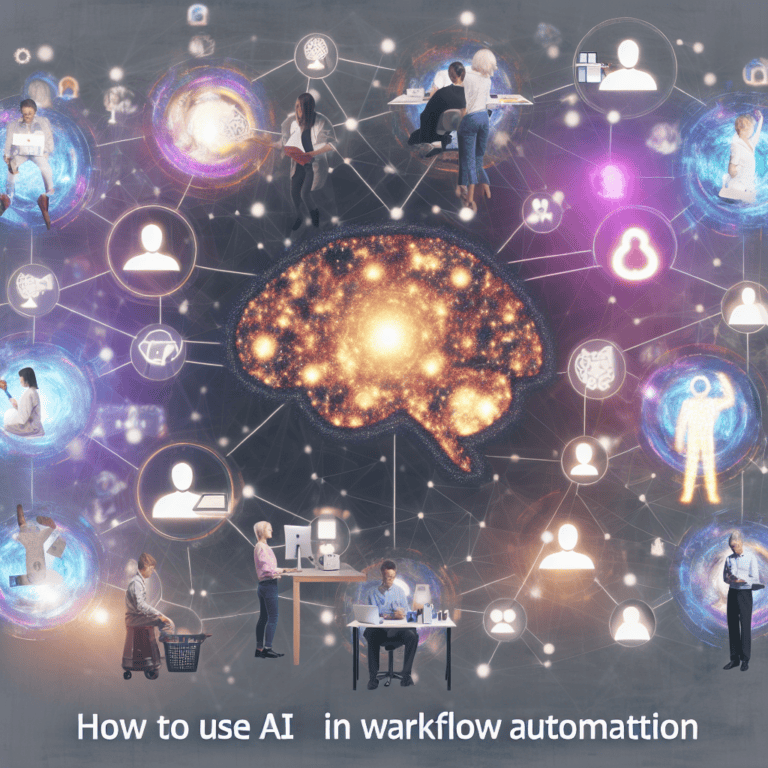Ensuring Workplace Safety with RTLS Technology: Workers and Assets Tracking
Picture this: a bustling workplace filled with employees hard at work, machinery buzzing, and products being moved from one place to another.
With so much activity happening simultaneously, it can be a challenge for business owners to ensure the safety of their workers and assets. That’s where Real-Time Location Systems (RTLS) technology comes in.
By utilizing advanced asset location tracking technology, businesses can monitor the whereabouts of their employees and assets in real time, allowing for better oversight and a quick response in case of emergencies.
In this blog post, we will explore the benefits of using RTLS technology in the workplace and how it can revolutionize businesses’ approach to safety and security.
So, let’s explore how you can keep your employees and workplace safe and sound with RTLS technology.
What is Real Time Location Systems (RTLS) Technology?
Real-Time Location Systems (RTLS) Technology is a breakthrough in location tracking that combines hardware and software to accurately determine the location of your people or assets.
RTLS technology uses various types of sensors, such as Radio Frequency Identification (RFID), GPS, and Wi-Fi, to capture location data in real time, providing accurate and reliable information about the location of items in a facility. This technology is used for a wide range of applications, including inventory management, asset tracking, and employee monitoring.
With RTLS technology, businesses can improve their operational efficiency, reduce waste, and track their assets in real-time. This empowers them to make informed decisions and optimize their operations.
Overall, RTLS technology is a game-changer in the world of location tracking, offering unparalleled accuracy and reliability that was previously impossible to achieve.
What are the Benefits of Asset Tracking Software for Accident Prevention?
RTLS systems for worker positioning offer numerous advantages. They help improve the safety of solitary workers and those handling hazardous materials, eliminate human error, and ensure compliance with health and safety standards in industrial settings.
Safety for Solitary Workers
Solitary workers perform their duties without direct supervision. As no one is nearby, these workers are more susceptible to accidents. Object tracking systems minimize the likelihood of emergencies. The infrastructure allows positioning an individual worker and monitoring environmental conditions, such as temperature and carbon dioxide concentration.
Employees can also use the SOS button, which transmits the signal to the enterprise’s engineers or security staff. This way, they will be able to quickly send help to the incident area.
Ways the platform enhances solitary worker safety:
- Real-time tracking makes it easier to monitor a solitary worker’s location.
- If a worker fails to check in, the platform provides security services with exact coordinates, facilitating a quick response.
- Extended absence from an assigned zone can be flagged as an emergency.
- The software can create geofences and trigger alarms if a worker enters a prohibited or hazardous area.
- The system can automatically detect falls, accidents, or prolonged inactivity.
Reducing Human Error
Statistics show that up to 80% of major industrial accidents are due to human error. Therefore, company management must address any mistakes made by workers. RTLS enhances industrial safety and minimizes human error in several ways:
- The system alerts machine operators when approaching each other, preventing collisions and injuries.
- It tracks tools’ locations and proper usage, ensuring they remain within designated areas and are in good condition, preventing worker injuries.
- The technology identifies dangerous zones and restricts worker access, monitoring air quality and alerting to high carbon dioxide levels.
- The platform ensures compliance with safety protocols and provides adequate break times to prevent fatigue-related errors.
While human error cannot be completely eliminated in industrial settings, RTLS helps minimize its impact and reduce the number of accidents caused by worker mistakes.
Compliance with Safety and Health Standards
In theory, workers should strictly adhere to all production norms and requirements. However, in practice, this is only sometimes the case. Without proper supervision, employees might unknowingly take risks that expedite tasks but endanger safety. Neglecting regulations and standards dramatically increases the risk of injury and occupational illness.
Ways asset tracking systems help avoid these problems:
- The software promptly identifies workers who fail to comply with safety requirements.
- The platform effectively monitors the use of personal protective equipment.
- The technology strengthens oversight during non-routine tasks or emergencies, alerting workers if equipment safety features are removed during maintenance.
- The system provides management with valuable insights into employee behavior, allowing quick identification of potential safety issues.
- RTLS improves maintenance planning, preventing incidents caused by equipment failures.
- In emergencies, the system ensures rapid access to workers or equipment.
Safety for Workers Handling Hazardous Materials
Real-time tracking of people and objects is crucial in hazardous environments like oil or chemical industries. Using RTLS in these sectors allows for the following:
- Monitoring containers with hazardous waste to ensure they are transported in compliance with regulations.
- Tracking chemical containers’ movements to align their transportation with current standards.
- Monitoring gas concentrations and detecting flammable materials during fire-prone operations, enhancing safety and preventing fatalities.
- Modeling potential hazards using “digital twins” to prevent their occurrence.
Data Analytics and Solution Implementation
Real-Time Location Systems (RTLS) leverage active RFID tags and sophisticated location engine software to track assets and manage assets effectively within enterprise operations. This technology plays a crucial role in enhancing safety and accident prevention by providing precise data to determine location of mobile devices and equipment across the facility.
Wearable sensors, integral to RTLS, gather comprehensive data on worker behavior and environmental conditions. This data is fed into advanced enterprise resource planning (ERP) systems, which analyze the information to pinpoint potentially hazardous areas. Such analysis is pivotal in identifying trends in emergencies, allowing management to develop targeted preventive measures.
Furthermore, understanding employee behavior through RTLS insights enables the creation of strategic plans to eradicate harmful habits or prevalent mistakes. This approach not only helps in addressing issues linked to human error but also enhances overall operational efficiency. Additionally, real-time location system capabilities extend to barcode scanning, ensuring that asset tracking is seamless and integrated into the daily workflows of the enterprise.
How RTLS Works as a Worker and Asset Management Solution
Every workplace, whether a construction site, warehouse, or office, carries inherent risks. These dangers can stem from potential accidents or non-compliance with safety regulations.
RTLS technology helps effectively address these issues. Tracking individuals’ real-time locations provides a dynamic view of every workstation within the enterprise, helping safety services identify potential hazards and respond instantly to emergencies. By employing RTLS to position workers, companies can achieve higher safety standards.
RTLS operates through unique tags placed on the tracked objects. These can be badges, bracelets, or helmets with built-in sensors for worker monitoring. An appropriate RTLS infrastructure is installed on the enterprise premises. RFID antennas, BLE readers, and similar receiving devices interact with the tags depending on the technology.
During operation, each tag exchanges location data with the station at varying intervals (from 1 second or more, depending on the need for accuracy). The information collected from the tags is processed by software and displayed on digital maps within a mobile application.
The system boasts a wide range of functionalities, including:
#1) Real-time positioning of workers
The primary capability of RTLS is its ability to determine your workforce’s actual position in real time. This is accomplished using several methods, including:
- Wearable Tags or Badges: Equipping workers with lightweight, inconspicuous tags or badges allows for seamless monitoring of their movements inside the RTLS framework.
- Smartphone Integration: By using cellphones’ GPS capabilities, RTLS expands its tracking capabilities outside interior environments, enabling continuous monitoring even in outdoor work zones.
- Zone-Based Tracking: Dividing your facilities into discrete zones allows RTLS to detect and verify an individual’s whereabouts inside allowed regions.
- Bluetooth Beacons: Strategically placing beacons across your facility allows interaction with personnel tags, improving location accuracy and permitting proximity-based notifications.
The best solution for real-time positioning will be determined by the exact architecture of your facility and the nature of your activities. A synergistic combination of these strategies might provide the most complete answer for people tracking.
#2) Monitoring Asset movements around the enterprise
An extensive RTLS configuration is the first step toward effective movement tracking across your business. Here’s how to maximize safety using this technology:
- Strategic Sensor Placement: Place sensors around the office in key spots. These sensors stay in constant contact with RTLS tags, giving real-time information and monitoring the movement of personnel and equipment across different zones.
- Customizable Alerts: Use the RTLS software to configure alerts that promptly warn managers when employees reach dangerous zones or when anomalous movement patterns are noticed. This accelerates reaction times and stops incidents before they start.
- Data Integration: To build a layered security and safety network and integrate RTLS data with access control and CCTV systems. With this connection, you can monitor your surroundings more broadly and get a comprehensive picture of them.
- Behavioral Analytics: Conduct behavioral analytics using the information gathered by RTLS. By observing how employees move across the facility, ineffective processes or possible safety hazards are identified. This knowledge allows you to make well-informed choices on modifications to the workplace design, safety improvements, or necessary training.
- Examine past movement data regularly: To spot trends and patterns that can indicate possible dangers, you must review the changes in data regularly. By studying this data, you can proactively modify your safety procedures and stop accidents before they happen.
Combining these tactics with RTLS technology improves your ability to track movements across your company. This promotes a proactive risk-management culture where safety is given top priority at all operational levels and guarantees real-time safety monitoring.
Avoiding problems rather than merely reacting to them makes the workplace safer and more productive for all parties.
#3) Creating geofences to restrict access to certain areas
One notable feature of RTLS is the ability to define virtual limits, known as geofences, inside your workplace. This is especially useful in situations when specific regions are naturally hazardous. You prevent workers from mistakenly accessing dangerous situations by marking certain areas as off-limits or restricted.
Consider putting up a geofence around heavy machines or regions with high electricity. If an employee wearing an RTLS tag reaches this defined zone, an instant alarm will be generated, allowing quick action and averting possible mishaps.
Furthermore, geofences can be tailored to your individual requirements. However, some zones need specific permission or entry credentials. RTLS technology is effortlessly integrated with current security measures, offering a comprehensive approach to workplace safety.
The possibilities for RTLS go well beyond these examples. Whether optimizing business processes, improving emergency response times, or simplifying asset management, RTLS provides the tools you need to create a safer, more efficient workplace.
#4) Monitoring environmental conditions, including enclosed spaces
Real Time Locating Systems will assist you not only in knowing where your people and assets are and monitoring the circumstances surrounding them. Consider connecting sensors to your RTLS tags that can detect temperature, air quality, and the presence of dangerous gasses.
This is particularly beneficial in confined rooms or regions with environmental dangers. Imagine a worker entering a tight room with low oxygen levels. When fitted with the appropriate sensors, the RTLS system can instantaneously identify this and issue a warning, allowing for prompt evacuation and avoiding a potentially fatal scenario.
You can also monitor temperature variations in critical storage locations to maintain product integrity. RTLS not only monitors movement but also helps to create a safer and healthier work environment.
#5) Warning of potential emergency risks
RTLS is excellent at not just responding to issues but also preventing them from occurring in the first place. Consider getting a message that a worker stays too long near a dangerous location or that heavy gear operates outside its authorized zone.
RTLS technology can be configured to detect these abnormalities and warn you immediately, allowing you to respond before the problem worsens. You can define unique parameters and thresholds corresponding to your particular safety measures, ensuring you are notified only when required.
This early warning system is distinguished between a close call and a significant accident. It’s like having an additional pair of eyes on the job, keeping your workplace safer and more secure.
#6) Developing short evacuation routes
Real-Time Location Systems (RTLS) provide more than simply tracking; they might be your lifeline in an emergency. Knowing each employee’s position in real-time allows you to dynamically build the shortest and safest evacuation routes.
Consider an emergency scenario in which each second counts. RTLS can instantly identify the closest exits for each person and direct them to the most efficient route, reducing confusion and guaranteeing a quick evacuation. This not only saves time but also lowers the chance of injury during frenzied evacuations.
You can also combine RTLS with your building’s fire alarm system. When the alarm goes off, the system automatically computes evacuation routes and displays them on digital signs around the complex, directing everyone to safety. This degree of readiness can make all the difference in safeguarding your most precious asset: your employees.
#7) Collecting detailed analytics for preventive safety measures
The collection of detailed analytics via RTLS can be approached systematically to maximize its benefits for preventive safety:
- Data Capture: First, ensure that your RTLS is configured to capture a wide array of data points. This includes not just the location of workers throughout the day but also their travel paths, dwell times, and interactions with both areas and equipment. Such comprehensive data provides a granular view of daily operations.
- Pattern Recognition: Utilize advanced analytics to identify patterns and correlations in the data. For instance, by analyzing the movement patterns of workers, you might discover that certain injuries occur more frequently in areas where congestion often happens or where equipment is improperly placed.
- Risk Assessment: With the patterns identified, conduct risk assessments to pinpoint potential safety hazards before they lead to incidents. This might involve assessing the frequency of near-miss events in specific locations, which can be early indicators of more serious safety issues.
- Predictive Modeling: Employ predictive modeling techniques to forecast potential future accidents. This allows you to proactively implement changes in processes or environment layout and provide targeted safety training to workers most likely to encounter these risks.
- Feedback Loop: Establish a feedback loop where the insights gained from the analytics are continually used to refine safety measures and RTLS settings. This iterative process ensures that the system evolves in response to new data, enhancing its effectiveness in preventing workplace injuries.
Using extensive location data collected from RTLS, you can develop a proactive safety management approach that not only responds to workplace accidents but also forecasts and mitigates possible hazards. This data-driven strategy promotes a safer workplace, lowering injuries and improving overall operational efficiency.
Because of its adaptability and capacity to improve safety measures, RTLS can be effectively used in a variety of sectors, including manufacturing, warehouses, logistics centers, hospitals, and educational institutions.
The system has great positioning precision and is perfect for monitoring objects, regulating motions, and effectively managing assets.
Key Considerations For A Successful RTLS Implementation
Ensuring workplace safety is paramount, and with Real-Time Location Systems (RTLS), you have a robust tool to reduce injury risks. RTLS technology enables precise tracking of both workers and assets, offering real-time updates and crucial data that can preempt potential accidents.
Integrating RTLS technology seamlessly with existing safety protocols is essential. This integration enhances safety measures and ensures that technology complements human oversight. Proper training on how to leverage RTLS effectively is crucial for your team to interpret data and react swiftly in emergencies.
Scalability is another key consideration for RTLS implementation. As your operations grow, your RTLS solution should adapt and continue providing comprehensive coverage. This adaptability ensures the long-term utility of your investment, fostering a safer work environment as your business expands.
Final Thoughts on RTLS and Asset Tracking
With the help of real-time location systems (RTLS), employee safety can reach new heights in the workplace. By implementing tracking systems for people and assets, businesses can proactively address potential emergency situations and reduce risks.
These innovative technologies promote a safer work environment, streamline business processes, and improve overall efficiency. From healthcare facilities to manufacturing plants, RTLS has the power to transform safety protocols and provide peace of mind for employees and employers alike.
So why wait? It’s time to embrace these game-changing technologies and pave the way towards a more secure and successful workplace. As they say, “safety first” – it’s not just a mantra but a proven strategy for thriving businesses.
Let’s harness the power of RTLS and make safety a top priority because, after all, nothing is more valuable than the well-being of our employees!


